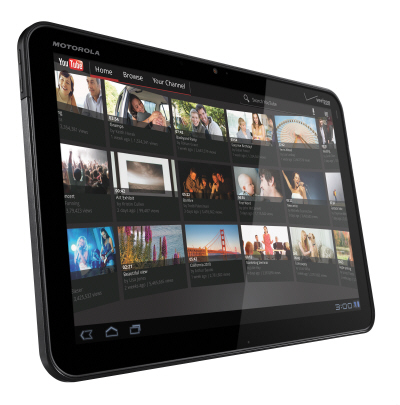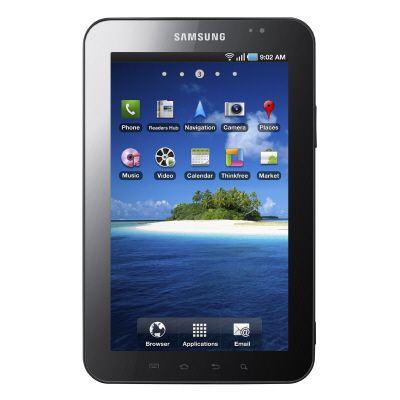Tablets may be the tech industry’s new drug, but should CIOs be wary of getting hooked or could these slick slates have a place in business after all?
Two new reports appear to suggest the answer is a definite yes. Forecasts from Morgan Stanley estimate tablet shipments could break the 100m mark by next year. According to its research, 67pc of CIOs expect to have tablets on their networks this year. This supports Apple’s claim that, less than a year after the iPad was launched, 80pc of Fortune 100 companies either already used or were piloting them.
Meanwhile, a separate report by consultants PwC has urged companies to embrace mobile devices and let employees bring their own tablets and phones into the corporate IT environment.
IT buyers don’t have to worry about the supply side: a slew of manufacturers are jockeying for position and we can get ready not just for Apple’s second-generation iPad – confirmed for launch on 2 March – but also the Samsung Galaxy Tab, HTC’s Flyer, the Motorola Xoom, HP TouchPad and BlackBerry Playbook.
PwC’s report goes so far as to suggest that the arrival of devices like these, and smartphones, are a reversal of the IT delivery model most CIOs know well. Instead of a top-down approach of providing users with a standard piece of hardware like a laptop, and a predefined set of applications, it suggests that employees should be allowed to bring their own devices to work and use the apps they want to get things done.
Bo Parker, head of PwC’s technology centre and innovation group in the US, believes tablets have the potential to create a new device category for certain types of knowledge workers. “The iPad is another example of something staff will want to bring in and connect to the network and get some work done on it, if they’re in a meeting or walking around. It also represents a move away from a one-size-fits-all approach to technology,” he says.

The Motorola Xoom tablet computer
On a recent visit to its Irish shared services centre, Chris Scalet, CIO with the pharma company MSD (formerly Merck), was bullish about touchscreen tablets. “We are actively looking at apps, both from our sales and marketing and our R&D area, but it will be application-driven,” he says.
“When you think about our sales reps today and where we can quickly deliver content when we’re meeting with the doctors. I can deliver video to a tablet – I can connect a doc to a particular therapeutic expert in one of our labs and have a direct dialogue between them. We do that today, it’s pretty rudimentary and there are huge opportunities to streamline that with some of these new devices coupled with the broadband capabilities now.”
“Bench scientists at MSD walk around with traditional paper lab notebooks but in the future, those lab notebooks will be electronic and there are huge productivity gains by utilising the interfaces that these devices give. I think they’re tailored to the consumer today – the question is how to you take that and tailor it now for commercial use.”
Parker suggests tablets may be best suited to use cases where people consume information rather than creating it. He also argues it makes more sense for IT departments to allow them because there’s a lower overhead to maintain the systems than the cost of running a standard laptop-and-software setup. “That’s where these slate-like devices really shine. They’re fantastic with their instant-on capability and for consuming information in an elegant and seamless way. If you’re not creating a lot of information, why does IT and the company add additional cost for that person if all they ever do is consume it?”
Consuming content on tablet computers
Parker’s view is shared by Citrix CEO Mark Templeton, who told Siliconrepublic.com last year: “The iPad is fundamentally for consuming content, not creating it. There’s an explosion in the number and types of devices that you can use to snack and dine on information that other people have prepared.” His company could yet play an important role in pushing the iPad’s place in business, its software that makes a Windows desktop accessible on an iPad has been downloaded more than 700,000 times.
Morgan Stanley’s research disputes the notion that slates are just for passive consumption. While early tablet usage was geared towards passive consumption, such as web browsing or reading email, it found that more people are using tablets for creating content.
There’s also a cultural question to all this, since many Irish organisations are traditionally conservative when it comes to technology. Security is always a handy excuse for IT departments to delay or avoid rolling out new systems, whether that’s actually the case or not (plenty of people are doing just that with cloud computing). However, Parker and the Morgan Stanley research argue that these devices are sufficiently secure for business use.

The Samsung Galaxy Tab tablet computer
PwC’s report argues that mobile devices will require a fundamental rethink of what a traditional business application looks like. “When you’re automating something where you assume someone is sitting for an hour and a half, you think about the business process one way. But if someone is walking around and they only have 30 seconds or maybe a minute to attend to something, you have to think about how much of that process they can do at any one point,” says Parker.
“The other thing for the enterprise to decide is when to build an app that’s unique to the operating system of the specific vendor – an iOS or an Android – as opposed to building an app that is more generic and uses the HTML 5 specifications,” he adds. “The most value for most enterprises is going to be focused on web apps for smart handhelds because the HTML specification is becoming more rich to allow support for that kind of thing.”
While there may be some areas in organisations, such as field functions where having an app built to the specific operating system makes sense, Parker believes the majority of apps should be built around web standards. This will also make it easier for businesses since any in-house software teams are probably familiar with developing this way already.
Against all of that, the hype factor shouldn’t be forgotten. Some US analysts, including Piper Jaffray and Citigroup, are wary that over-optimistic vendors will flood the market this year with more devices than the market really needs.
As with so much in the technology sector, what’s claimed to be new often has its roots in something much older. For anyone who thinks the tablet category began last year with the launch of the first iPad, in fact the same broad form factor has been around for a lot longer, albeit with nothing like the same fanfare. Tablets first hit the shelves in 2002, but despite the backing of heavyweights like Microsoft, HP and Toshiba, the slim devices were quickly consigned to narrow niches and struggled to break out into the mainstream.
The momentum behind the iPad and others appears to suggest history is not about to repeat itself, but the question facing CIOs remains a familiar one: whether to block the new technology or embrace it; hold back the tide or go with the flow.